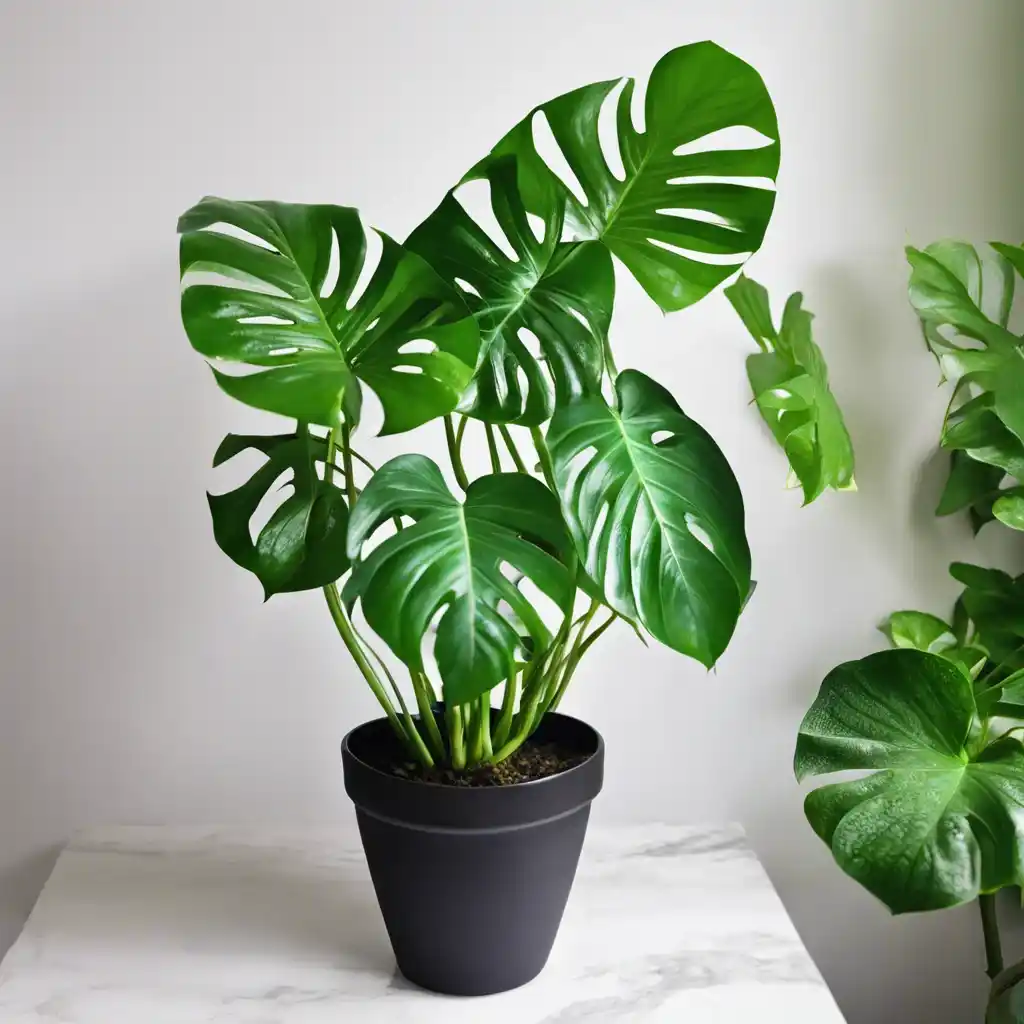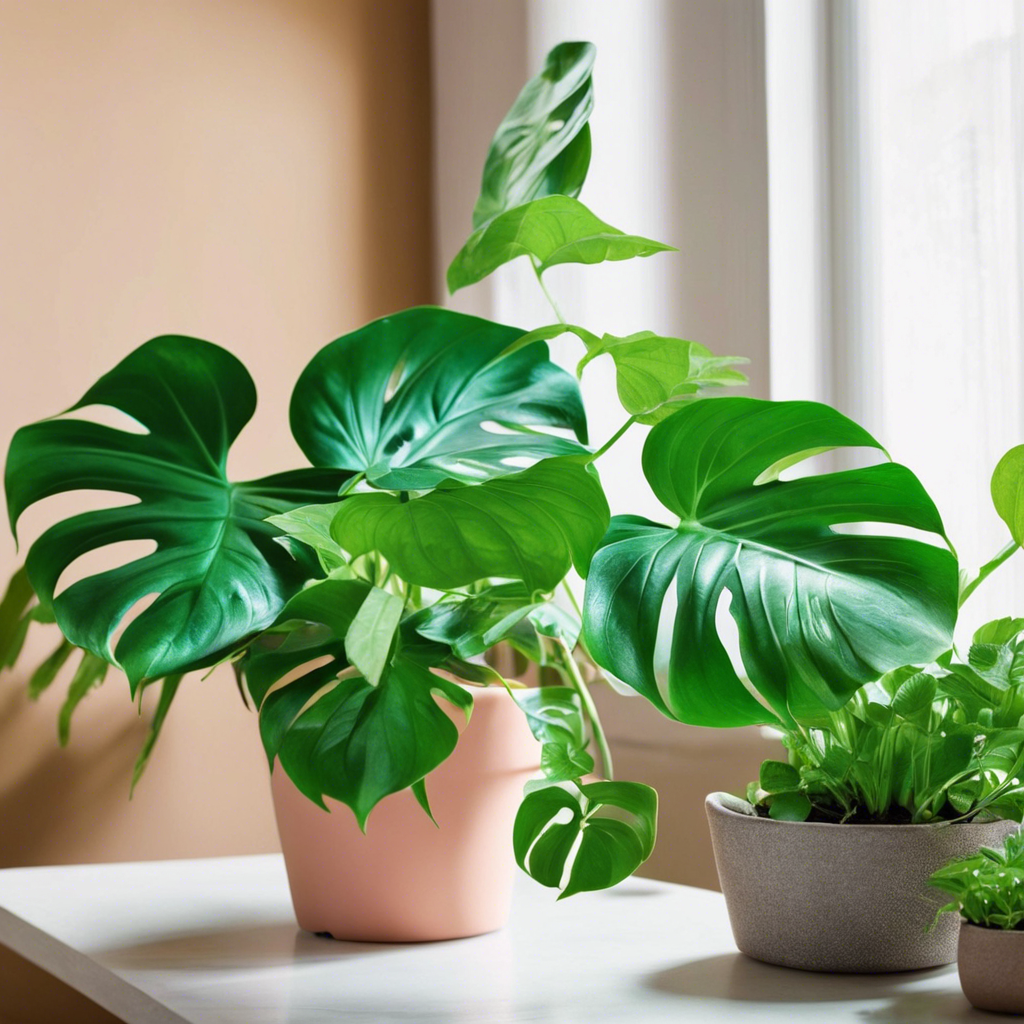
Introduction
Monstera mint, scientifically known as Monstera deliciosa ‘Mint’, is a stunning variegated cultivar of the popular Swiss cheese plant. Its unique mint-green and white variegation makes it a prized addition to any plant collection. Whether you’re a beginner or an experienced plant parent, these tips will help you nurture your Monstera mint to its full potential.
1. Provide Bright, Indirect Light
Optimal Light Conditions
Monstera mint plants thrive in bright, indirect sunlight. Place your plant near a north or east-facing window that lets in ample light, but avoid direct sunlight as it can scorch the leaves. Early morning or late afternoon sun is ideal.
Artificial Lighting Options
If natural light is limited, supplement with grow lights. LED grow lights with a color temperature of 5000-6500K are excellent for Monstera mints. Position the lights 12-18 inches above the plant and provide 12-14 hours of light daily.
Light and Variegation
Proper lighting is crucial for maintaining the plant’s variegation. Insufficient light can cause the plant to produce more green leaves to compensate, while too much direct light can fade the variegation.
2. Water Regularly, But Allow Drainage
Watering Frequency
Monstera mints appreciate consistently moist soil, but be careful not to overwater. Water your plant thoroughly when the top 1-2 inches of soil feel dry to the touch. This usually translates to watering once every 7-10 days, depending on your home’s conditions.
Proper Drainage
Ensure your pot has drainage holes to prevent water logging, which can lead to root rot. Use a well-draining potting mix composed of:
- 1 part peat moss or coco coir
- 1 part perlite or pumice
- 1 part orchid bark
This mix provides excellent aeration and drainage while retaining enough moisture.
Water Quality
Use room temperature, filtered water or rainwater if possible. Monstera mints can be sensitive to chlorine and other chemicals found in tap water.
3. Provide Adequate Humidity
Creating a Humid Environment
Monstera mints thrive in humidity levels between 60-80%. If your home is on the drier side, consider using a humidifier or placing your plant on a pebble tray filled with water to increase humidity levels.
Alternative Humidity Methods
Group your Monstera mint with other humidity-loving plants to create a mini-greenhouse effect. Misting the leaves daily can also help, but be cautious of water sitting on the leaves for extended periods, as this can lead to fungal issues.
Monitoring Humidity
Use a hygrometer to accurately measure the humidity around your plant. This will help you adjust your humidity-increasing methods as needed.
4. Feed Your Plant Regularly
Fertilizing Schedule
During the growing season (spring through early fall), provide your Monstera mint with a balanced, water-soluble houseplant fertilizer (NPK 20-20-20) every two weeks.
Fertilizer Application
Dilute the fertilizer to half the recommended strength to avoid over-fertilization. Apply the fertilizer to damp soil to prevent root burn. Reduce fertilizer application to once a month during the fall and winter when plant growth naturally slows.
Organic Alternatives
For a more natural approach, consider using organic fertilizers like worm castings or compost tea. These provide slow-release nutrients and improve soil structure.
5. Offer Support and Prune When Necessary
Supporting Growth
Monstera mints are natural climbers. Provide a moss pole, trellis, or bamboo stake for your plant to climb, mimicking its natural habitat. This encourages larger leaf growth and helps the plant develop its iconic fenestrations (holes) and splits.
Pruning Techniques
Prune your Monstera mint to maintain its shape and promote bushier growth. Use clean, sharp pruning shears and cut just above a leaf node. The best time to prune is in spring or early summer, at the beginning of the growing season.
Propagation
Save your pruned stems for propagation! Monstera mints can be propagated easily in water or moist soil. This is a great way to expand your plant collection or share with friends.
Additional Care Tips
Repotting
Repot your Monstera mint every 18-24 months or when roots start growing out of the drainage holes. Choose a pot 1-2 inches larger in diameter than the current one. Spring is the ideal time for repotting.
Monitoring Plant Health
Regularly inspect your plant for signs of pests or diseases. Yellow leaves may indicate overwatering, while brown, crispy edges could signal low humidity or underwatering. Adjust your care routine accordingly.
Pest Management
While generally pest-resistant, Monstera mints can occasionally fall prey to spider mites, mealybugs, or scale insects. Treat infestations early with neem oil or insecticidal soap, applying weekly until the problem resolves.
Cleaning and Maintenance
Dust the large leaves regularly with a damp cloth to keep them clean and photosynthesizing efficiently. This also gives you an opportunity to inspect the plant closely for any issues.
Conclusion
With proper care, your Monstera mint will become a stunning, statement piece in your home. Its unique variegation and impressive size make it a true conversation starter. Remember, every plant is unique, so don’t be afraid to adjust these guidelines to suit your specific Monstera mint and home environment. Happy growing!

